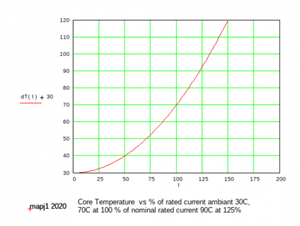broadgage:
As an extreme but illustrative example consider a circuit wired in 2.5mm SWA without any de-rating for grouping etc, and protected by a 20 amp fuse. If the cable was long enough, the fuse might never operate on a phase to neutral short circuit. But would the cable be damaged? I suspect not.
In most real world cases voltage drop would be a problem first.
According to the book the time-current table for a 60898 B, C or D 32 would allow a continuous current of 46A and not trip.
I'm wondering how the cable would cope with that.

We're about to take you to the IET registration website. Don't worry though, you'll be sent straight back to the community after completing the registration.
Continue to the IET registration site